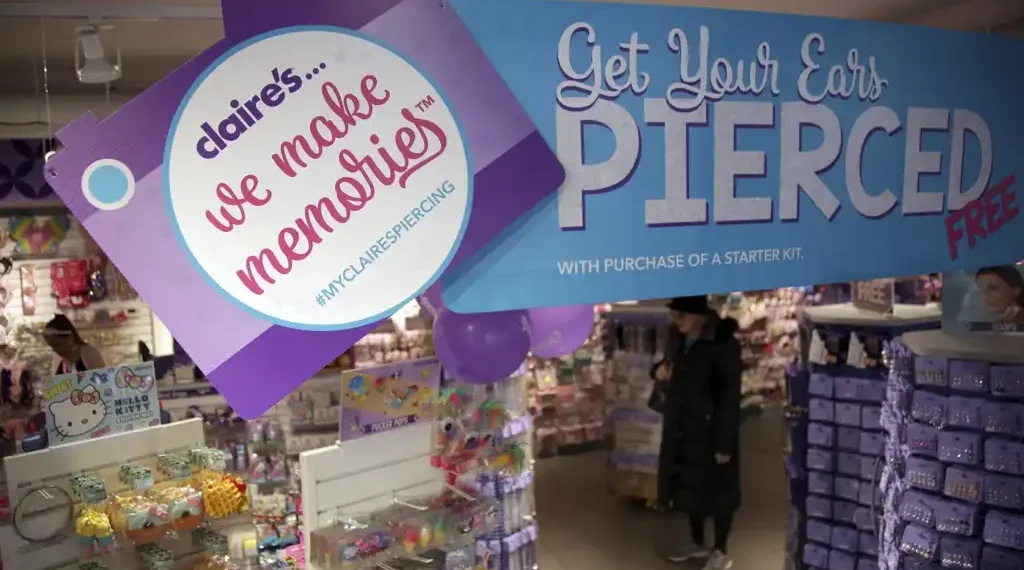Claire’s Files for Chapter 11 Bankruptcy for the Second Time Since 2018
Published: August 7, 2025, 14:00 (U.S. Eastern Time)
Teen accessories retailer Claire’s has filed for Chapter 11 bankruptcy protection, marking its second such filing in just seven years. The move reflects ongoing challenges facing traditional brick-and-mortar retailers, including mounting debt, shifting consumer preferences, and increasing pressure from online competitors.
The company confirmed that its North American stores will remain open as it restructures operations and explores strategic alternatives.
A Legacy Retailer Struggles in the Evolving Marketplace
Claire’s Holdings LLC, along with certain U.S. and Gibraltar-based subsidiaries, filed for Chapter 11 protection in the U.S. Bankruptcy Court for the District of Delaware on Wednesday. The company cited a combination of high debt, declining mall traffic, and intensifying online competition as key factors behind the filing.
Founded in 1974 and headquartered in Hoffman Estates, Illinois, Claire’s has long been a fixture in malls across the United States. Known for its signature ear-piercing services, the company has helped millions of teenagers mark a rite of passage over the decades. Today, it operates over 2,750 Claire’s stores in 17 countries and an additional 190 Icing stores in North America.
Despite its broad footprint, the company is grappling with financial headwinds. According to court filings, Claire’s assets and liabilities both range between $1 billion and $10 billion.
Retail Landscape Continues to Shift
Claire’s filing comes amid a growing list of teen-focused retailers struggling to stay afloat in a rapidly changing retail environment. Fashion retailer Forever 21 also filed for bankruptcy earlier this year—for the second time—ultimately closing its U.S. operations.
Industry experts say the challenges Claire’s faces are indicative of broader structural issues in the sector.
“This decision is difficult, but a necessary one,” said Chris Cramer, CEO of Claire’s, in a statement. “Increased competition, consumer spending trends, and the ongoing shift away from brick-and-mortar retail—combined with our current debt obligations and macroeconomic factors—necessitate this course of action for Claire’s and its stakeholders.”
Cramer emphasized that the company remains operational and is actively exploring partnerships to strengthen its financial footing. He also assured stakeholders that Claire’s intends to continue paying employees’ wages and benefits, and has filed for court approval to use existing cash resources to support operations during restructuring.
Industry Experts React to the Filing
Retail analyst Neil Saunders, Managing Director of GlobalData, said the bankruptcy was expected, given the company’s long-standing financial instability.
“Claire’s bankruptcy comes as no real surprise,” Saunders noted in an analysis published Wednesday. “The chain has been swamped by a cocktail of problems—both internal and external—that made it impossible to stay afloat.”
Internally, Saunders pointed to unsustainable debt levels and weak cash flow that left the company vulnerable. Externally, tariffs on imported goods and escalating costs further strained the business.
“Claire’s is simply not in a position to weather these challenges effectively,” he said. “Reinventing the brand and its business model will be a tall order in the current retail climate.”
Competitive Pressures from Online and Global Retailers
Claire’s also faces rising competition from fast-growing online retailers such as Amazon, Shein, and Temu, which offer low-cost accessories with convenience and speed. Meanwhile, brands like Australian jewelry chain Lovisa have captured a younger demographic by offering trend-driven assortments at affordable prices—often with more modern retail experiences.
Unlike its digitally native competitors, Claire’s has relied heavily on physical mall locations, which have seen significant declines in foot traffic over the past decade. The company has made efforts to modernize its operations, including launching an e-commerce platform and expanding its presence in Europe, but these efforts have yet to reverse the broader trend.
Looking Ahead: A Restructuring Path Forward
Despite the challenges, Claire’s leadership remains hopeful that the restructuring will allow the company to regain financial stability and better position itself for long-term growth.
“We are in active discussions with strategic and financial partners to chart a path forward,” said Cramer. “Claire’s remains committed to delivering value to our customers, while continuing to collaborate closely with our suppliers and landlords during this period.”
The company has not yet disclosed a timeline for completing the bankruptcy process or whether it anticipates any store closures.
As traditional retail continues to evolve, Claire’s case will serve as a bellwether for how legacy mall-based brands can—or cannot—adapt to the demands of the digital economy.
Conclusion
Claire’s second Chapter 11 filing highlights the profound shifts reshaping the retail industry. As consumer behavior continues to move online, legacy brands must adapt or face the consequences. Whether Claire’s can successfully restructure and reinvent itself remains uncertain—but the challenges it faces are increasingly common across the retail landscape.
This article was rewritten by JournosNews.com based on verified reporting from trusted sources. The content has been independently reviewed, fact-checked, and edited for accuracy, neutrality, tone, and global readability in accordance with Google News and AdSense standards.
All opinions, quotes, or statements from contributors, experts, or sourced organizations do not necessarily reflect the views of JournosNews.com. JournosNews.com maintains full editorial independence from any external funders, sponsors, or organizations.
Stay informed with JournosNews.com — your trusted source for verified global reporting and in-depth analysis. Follow us on Google News, BlueSky, and X for real-time updates.













